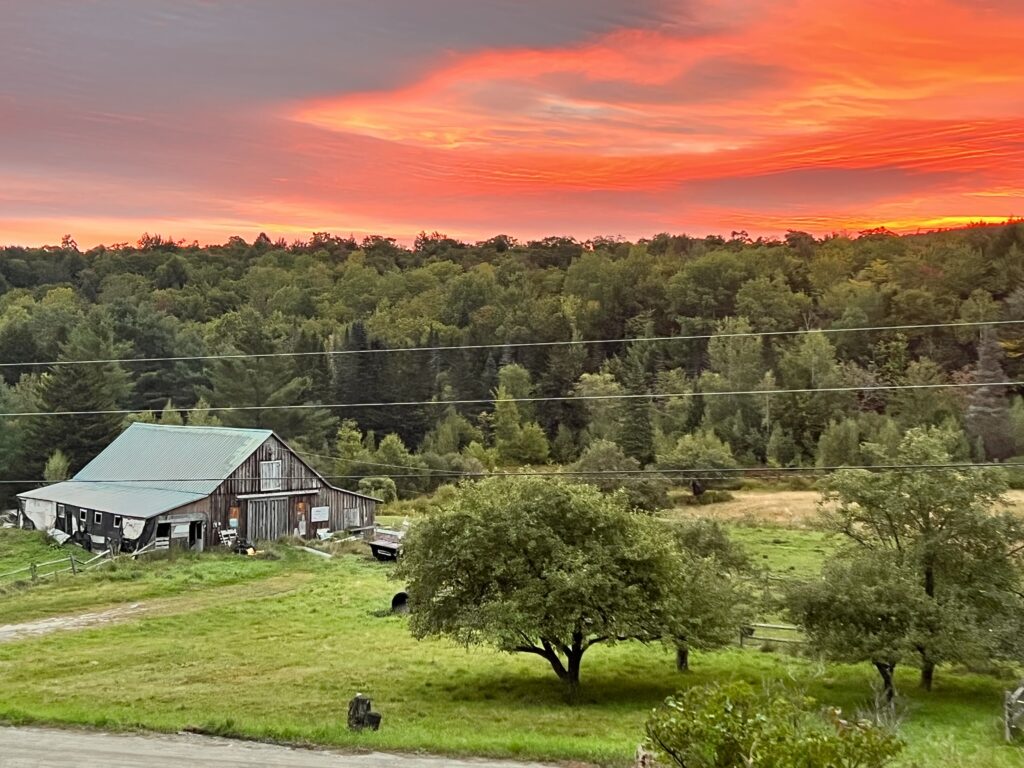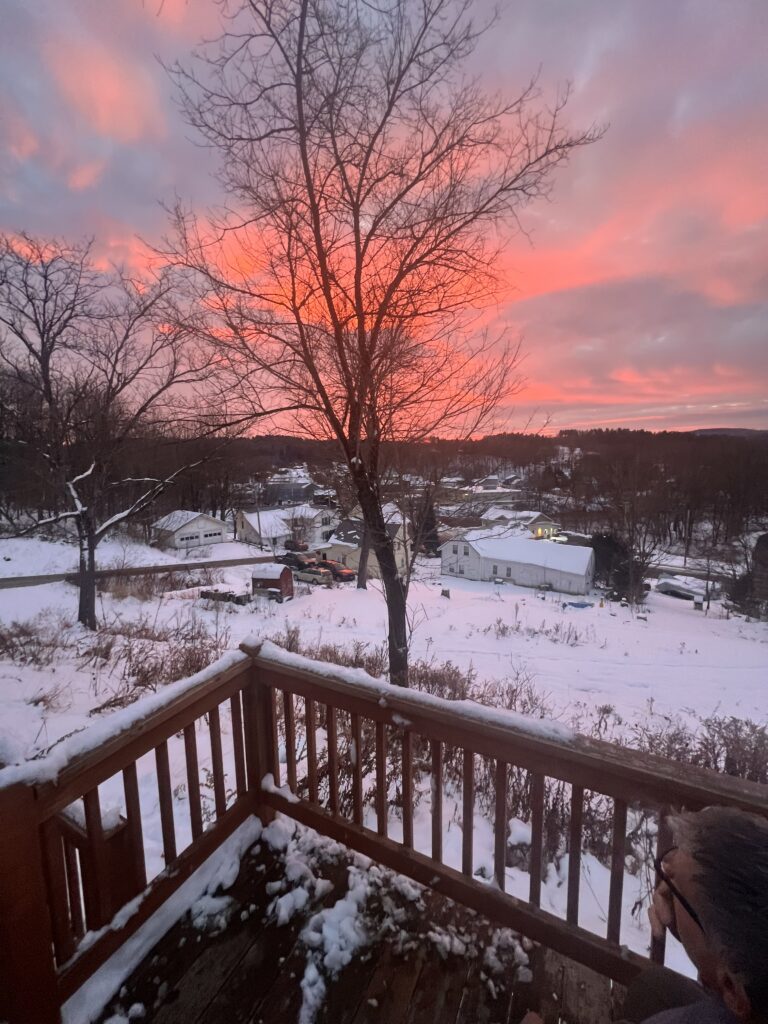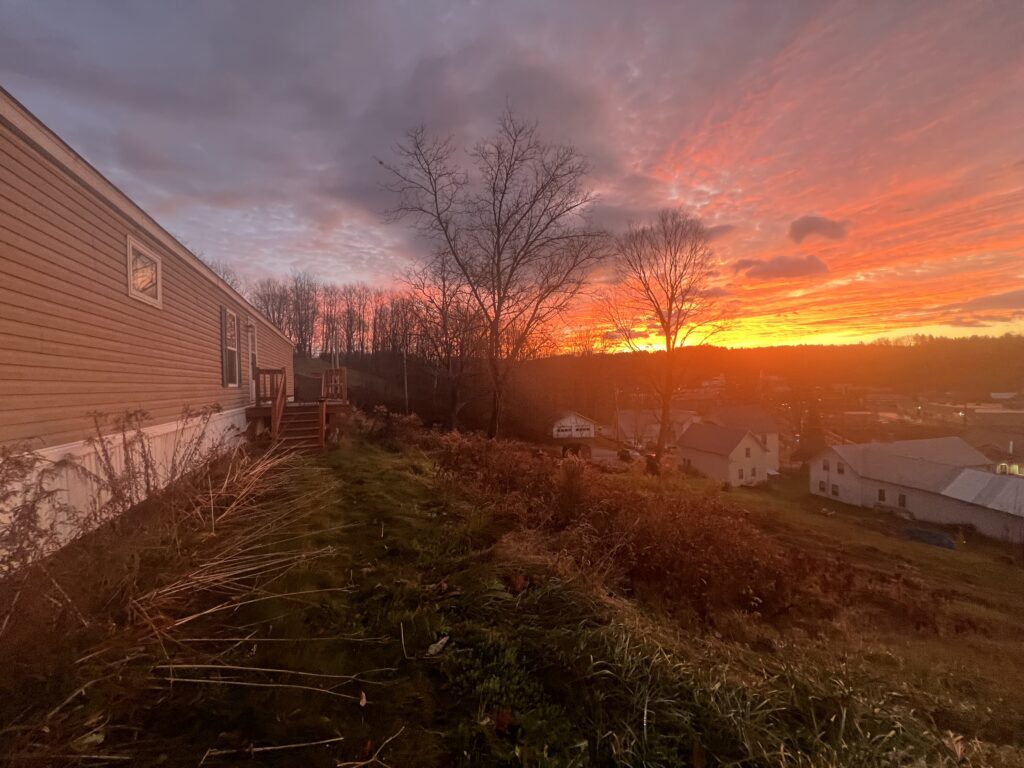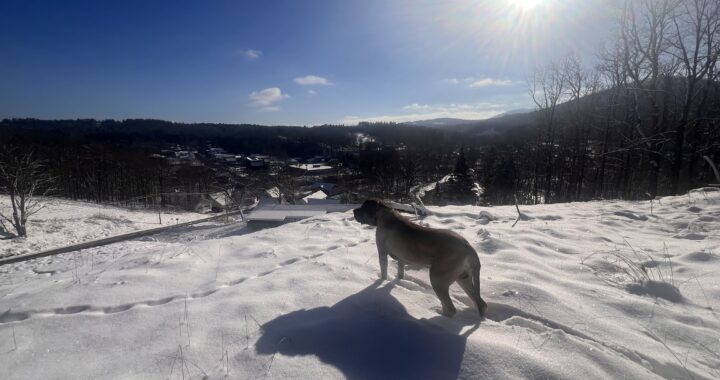When people imagine homesteading in Vermont, they often picture a sprawling farm: wide fields, red barns, and endless potential. For a while, that’s exactly what I had. Thirty-seven acres, animals, projects, and a big dream. It should have been everything I wanted — and yet, it nearly broke me.
What I learned on that land — and what I carried with me to my smaller, more sustainable homestead today — is this: acreage isn’t the answer. Small, steady steps are.
The 37-Acre Dream
At first, owning 37 acres felt like success. I had room for gardens, animals, projects, and expansion. It was the kind of property that made people say, “Wow, you’re living the dream.”

But what no one sees in those postcard moments are the bills stacked on the counter, the maintenance costs, and the never-ending to-do list.
The truth? Managing that much land was a financial and emotional nightmare. Property taxes, feed costs, heating bills, and constant repairs ate up every dollar before I even saw it. What should have been freedom started to feel like a trap. Instead of joy, I felt pressure — pressure to produce, pressure to keep up, pressure to justify the expense of owning so much.
That’s not what homesteading is supposed to be
Choosing a Different Path
When the decision came to sell, it wasn’t easy. Letting go of the dream of “more land = more success” felt like failure at first. But deep down, I knew it was the right choice.
Starting over on 2.5 acres — small, modest, and most importantly free and clear — changed everything. For the first time, I could breathe. No looming bills. No endless upkeep. Just a piece of land I could manage, love, and truly call home.
It wasn’t the acreage that mattered — it was the freedom.
The Beauty of Small
Here’s what I’ve discovered since downsizing:
Less land = more focus. Instead of stretching myself thin across 37 acres, I now concentrate on gardens, animals, and projects that I can actually manage.Free and clear = peace of mind. Without a mortgage or endless bills, I can enjoy the work rather than constantly worrying about how to pay for it.
Smaller spaces = more creativity. Every square foot counts. I’ve learned to be resourceful, efficient, and intentional in ways I never was before.
And here’s the thing: the joy I get from my 2.5 acres is so much greater than what I ever felt on 37. Because this land doesn’t own me — I own it.

My New Beginning
On this smaller homestead, I started over in the simplest of ways:
A manageable garden bed instead of endless rows I couldn’t keep up with.A working rabbitry that actually fits into my daily routine.A converted shed that became a functional barn without draining my savings.
Each project feels doable. Each success builds on the last. And instead of debt and exhaustion, I feel gratitude.Lessons Vermont Has Taught Me
Vermont has a way of humbling you quickly. Whether you’re on 2 acres or 200, the seasons will teach you lessons:
Winter water freezes, no matter how much land you have. I learned to invest in heated crocks and insulated buckets.Frost will take what it wants. On a smaller scale, I can cover beds and protect what I grow more easily.Mud season spares no one. But on 2.5 acres, it’s manageable — a few gravel paths and boot trays solve problems that once felt overwhelming.
Small doesn’t mean easy. But it does mean sustainable.Advice for New Homesteaders
If you’re dreaming of starting your own homestead, here’s what I’d share from my journey:
Don’t chase acreage. Big land can bring big headaches. Start with what you can handle.
Be free where you can. A smaller property that’s paid off can give you more freedom than a bigger one that owns you.
Focus on skills, not scale. Learning to raise rabbits or preserve a few jars of applesauce matters more than having 40 unused acres.
Start small, grow steady. Homesteading isn’t a race — it’s a way of life.
Gratitude is fuel. When you’re thankful for what you have, you’ll see opportunities everywhere.
Why I’m Grateful
These days, when I walk outside, I don’t see limits. I see a homestead that fits my life. I see projects I can actually finish, animals I can properly care for, and gardens I can manage without breaking my back.
I’m not chasing a postcard-perfect farm anymore. I’m living in the rhythm of Vermont’s seasons, one small, steady step at a time. And that feels like success.
Because in the end, it’s not about how many acres you have. It’s about what you build, what you learn, and the peace you feel on the land you love.

Closing Thoughts
I used to think more land meant more freedom. Now I know the truth: freedom comes from simplicity, sustainability, and gratitude. My 2.5 acres are enough — more than enough.
If you’re waiting for your “dream farm,” don’t. Start where you are, with what you have. Your version of homesteading doesn’t need to be big — it just needs to be yours.
And I promise you this: the joy of raising food, caring for animals, and creating a home rooted in Vermont soil isn’t measured in acres. It’s measured in gratitude.

